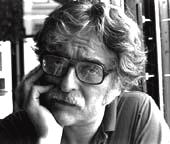|
Bill Pierce - Nuts & Bolts The Digital Dilemma |
 |
|
In the past we have talked about silver-based photography and digital photography as though they were separate, two totally different systems vying for the "I'm best" award. But it's the blend of both that stands the biggest chance of capturing the "I'm best" award. Small digital cameras suitable for handheld news photography have some limitations. They are not going to produce large, exhibition-quality prints in the conventional sense of the word. Nor are all the problems those of image quality. Ask anyone who has shot a fast sequence and used up the multiple shot buffer, in essence, run out of film. There are other "shooting problems" but the most troubling problems of all are the archiving problems. If you are an optimist, "Digital formats and storage mediums are in a constant state of improvement." If you're not, "Digital formats and mediums you are using are constantly becoming outmoded, obsolete and disappearing." And, so far, none of those mediums has the archival potential of properly stored film. Tough luck, visual history. For all these reasons, it makes sense to prefer conventional film cameras to digital in a great many shooting situations even when the first use, but not the only use, of the pictures may be in a newspaper or on a relatively small magazine page. Although the reasons are not as clear cut, it can make great sense to prefer printing in the digital darkroom over the conventional darkroom. For one thing, the digital darkroom isn't dark. Nor is it smelly and damp. (At this point, I have to point out my fondness for the conventional darkroom. I often yell out, "Sorry I'm dark; don't come in" when someone knocks on my conventional darkroom door even though the lights are on and I'm reading the Times.) But the real reason to use the digital darkroom is control. Sending your prints "out" to a commercial lab and accepting what comes back is still probably the most popular way to make color prints. But even in your own "wet" color darkroom, finding the right color balance and density can be a long, time-consuming process. And, once we have found the overall balance, the routine tasks of burning and dodging areas of a print can cause color shift in those local areas. So we lose patience and make a print that isn't as good as it could be. On the other hand, scanning and printing with a computer is relatively quick, not only in making a final print but in previewing each step along the way. Additionally, curve control, color shifts specific to the shadow, midtone or highlight areas and sharpening allow us to produce a better, "real" print, long before we enter the computer's ability to alter reality. Are we all fools? Computers aren't new. Why haven't we always been scanning and computer printing? Cost and quality. Simple. There aren't a lot of people who could afford their own drum scanner. But this year 4000 dpi conventional scanners that will handle both 35mm & 120 film and with with the ability to capture a range of densities approaching that of a drum scanner have appeared on the market at the reasonable price of 2 Leica bodies or 3 EOS bodies. 1440 X 720 dpi, photo-quality printers are on the market for the price of less than 50 rolls of Kodachrome with processing. Not too long ago, the best computer color prints came out of a professional lab. Now a lot of photographers, and I mean a lot, are turning out top flight work on their (to use a computer-era phrase) desktops. There is a learning curve, but early in the game you learn to control overall color, density and contrast. Those are not only the basic controls behind any good print; they are the controls that make sure the print matches your idea of what it should be. Is there a problem with computer printing? Sure, permanence. There has always been a problem with conventional dye based color materials. The problems is there with computer printing, too. However, we are still early in the development of computer color printing, have seen great improvements and should see more. The boss in these matters in Henry Wilhelm. Check in at his site, http://www.wilhelm-research.com, and you will always have the latest information on what lasts and what doesn't. As a bonus, you can find out how camera color films are doing, too. What about the advantages of computer printing black-and-white over conventional silver printing? For one, computer-generated black-and-white pigment prints have good stability and storage characteristics. But that's not an advantage, just a tie with the traditional materials. That is much the case with other aspects of computer versus traditional black-and-white printing. Dodging, burning, different contrast grades, bleaching, toning, all give silver black-and-white photography controls that are most easily handled by a computer in color printing. Computer vs. conventional black-and-white darkroom? In many aspects, it's a tie. The silver print leads in the easy achievement of large prints. In some areas it is more economical. Properly processed and stored fiber paper has a track record of longevity. But, in the end, in many ways, computer and conventional black-and-white printing are different but equal. Of course, if you want to make your significant other look flawless, gorgeous and younger looking than their younger siblings, computer retouching is much more effective that silver-based retouching. Admittedly, that is not a journalistic concern. But it sure can make a journalist's private life easier. Bill Pierce
|
|
|
ARCHIVES
| PORTFOLIOS
| LINKS |
|